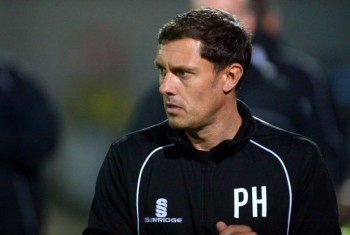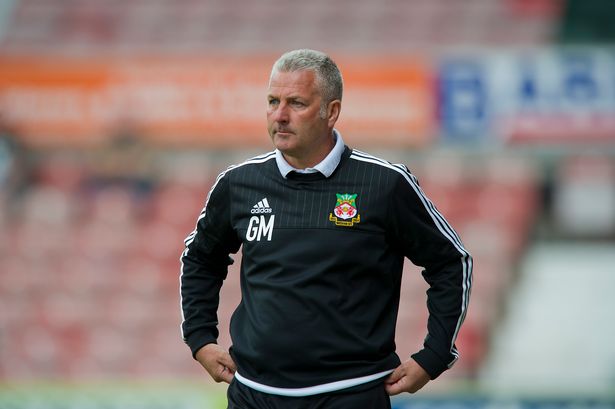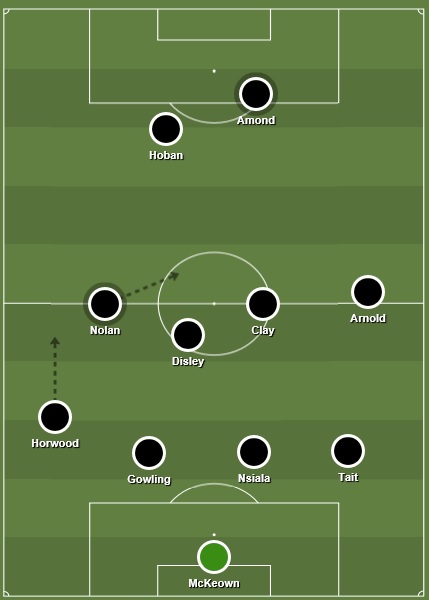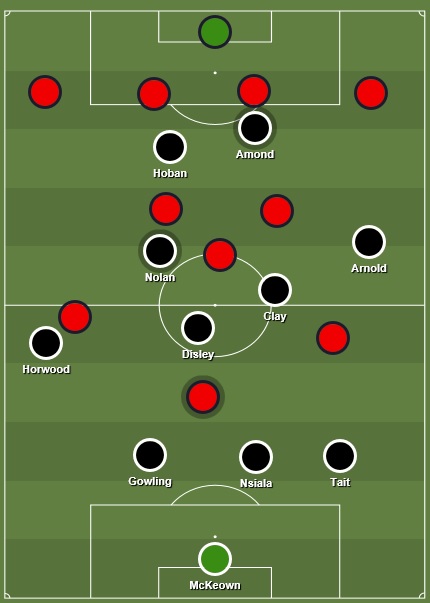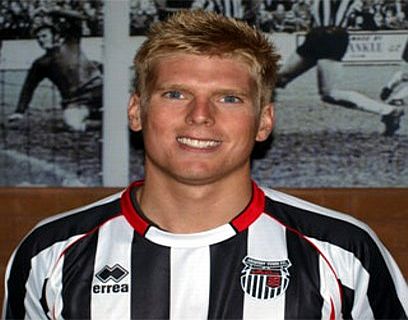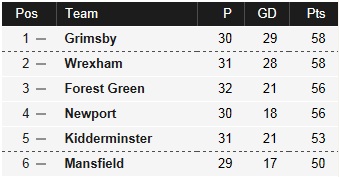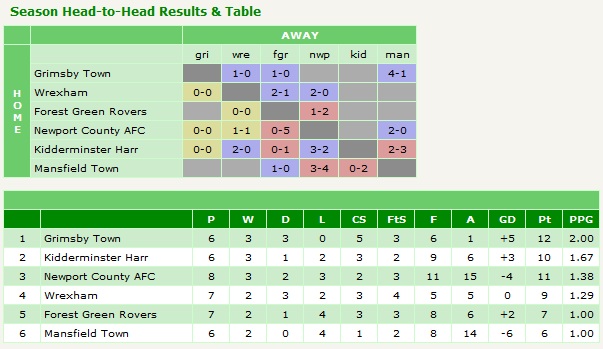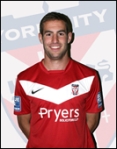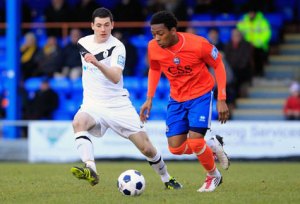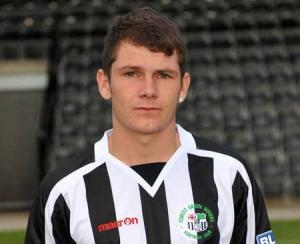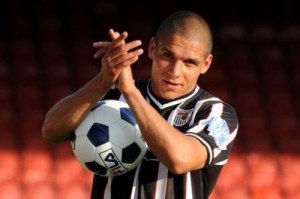A little under 3 weeks ago, I wrote about how Paul Hurst had got it tactically spot on for a 1-0 home win over Wrexham. What’s happened since strongly suggests to me that Hurst either didn’t plan those Wrexham tactics in as much detail as I described it, or he didn’t understand what made it work. In addition to that, the Town boss has also shown up several Managerial deficiencies that has lead to a lot of fans losing confidence in his ability to lead us to promotion.
Since that win on March 26th, Town have taken just 4 points from the 15 available.
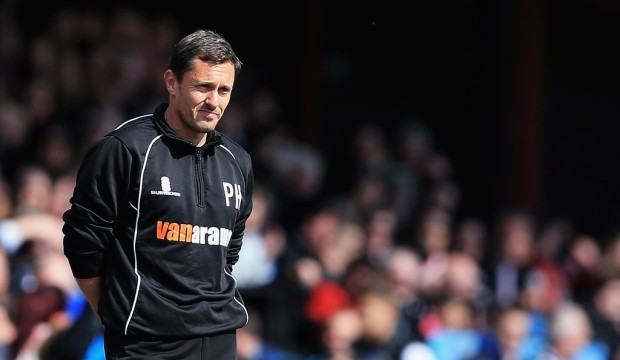
Tactics Wrong at Moss Rose
The game immediately following the Wrexham game was away at Macclesfield. Hurst stuck with the same lop-sided midfield system with Nolan coming inside to make a central 3. This was never going to be as effective and Hurst was tactically naïve to think it would. Robertson came in for the injured Horwood at left back and Robertson, for as solid a defender as he is, doesn’t have the legs to get up the pitch quickly to provide the width on that side if the midfielder in front of him is asked to drift into the centre. Not forgetting the main reason Hurst had used this system against Wrexham – the 3 man midfield we were up against – was no longer a problem with Macclesfield’s 4-4-2.
No Reaction with Game Slipping Away
Next up for the Mariners was an away trip to the leaders – Cheltenham. Refereeing decisions went against both sides during the game but Town were not at the races for the first 40 minutes, during which time they went a goal down. Having got an equaliser early in the second half, Cheltenham soon went back in front which immediately knocked the stuffing out of Town. We couldn’t get any sort of play going but Hurst made no changes until after Cheltenham got a third goal, sending Bogle on for Arnold in the 78th minute. This was hugely frustrating to watch Town struggle to even get a foothold in the game yet Hurst allowed the clock to run down without injecting new life/energy into the side or changing our shape. Only when it was too late did he try and do something about a game that was slipping away from us ever since Cheltenham got their second goal in the 58th minute.
Lack of Invention
The following three games had highs and lows but that only adds to the frustration Town fans feel. We came back from 0-2 down to win 4-3 away at Aldershot and this appeared partly down to the introduction of Omar Bogle and Jordan Stewart at half time. It was unusual of Hurst to make substitutions at half-time and it later transpired that Monkhouse and Hoban had been struggling with knocks.
Saturday saw Eastleigh come to Blundell Park and Hurst stuck with the same eleven that started the second half at Aldershot 4 days earlier. Most would have agreed with the line-up and it was only poor finishing and/or an excellent goalkeeping display by Ross Flitney that denied Town 3 points as they settled for a point against the 10-man Spitfires.
Again though, only 2 like-for-like substitutions in the 72nd minute against a side playing with 10 men since the 49th minute showed a lack of invention from the bench.
That lack of invention was also evident on Tuesday when Braintree were the victors at Blundell Park.
Insanity
Einstein once defined insanity as “doing the same thing over and over again and expecting different results.”
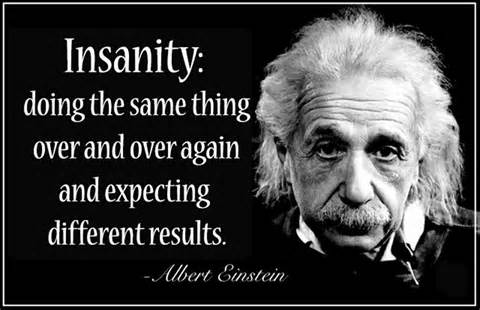
I could apply this apparent “insanity” to the management of GTFC in two ways.
- We have consistently struggled to break down sides that come to Blundell Park and are fairly well organised and set up to frustrate us. We know teams will come and do this. Yet we haven’t attempted at any point to come up with a different idea of how to approach these games and continue to predictably struggle against a deep defensive block set up by a well-drilled side.
- During an individual match, Hurst and the players either do not recognise when something isn’t working or the management only want us to play in a certain way and not differentiate from that. Sometimes we play dozens of long high balls up to the front two with very little success. Yet we continued to launch it forward. Were we expecting Amond and Hoban would grow 6 inches during the game and suddenly become a match for Braintree’s dominant centre halves in the air? And if a flat 4-4-2 isn’t working to break a team down, we never try something else to change shape or give the opposition different problems to think about.
Where Did We Fail Against Braintree?
Braintree are known for being in tight games with few goals and their defensive record is second only to Cheltenham in the National League this season. It was clear to everyone how they would come and play. Keep it tight, keep a deep defensive block with 5 in midfield, clear their lines early playing percentage football and looking for set-pieces.
Yet Town played predictable football with no invention from the bench or on the field. In all honesty Town could’ve played for 3 hours and wouldn’t have scored. Braintree were always going to get one chance, and they took it to deservedly take the points.
Shape
It’s a trait of Hurst’s sides to keep their shape very well. This is no bad thing. The problem is, we also keep to our shape when in possession. The rigid lines of the 4-4-2 leave few passing options and it is easy to defend against a team so inflexible when in position. Keeping our shape when we don’t have the ball is imperative, but when we have the ball we need to have players coming out of their disciplined zones. On Tuesday there was no-one creating space, either for themselves or for the team. We didn’t stretch a team that were always going to be happy for us to play in front of them. There was no movement to drag Braintree’s well-drilled players out of their positions, not enough third man runs (only Tait offering this from full-back). Arnold could have drifted infield between the defensive and midfield lines to pick up the ball. Monkhouse moved to receive the ball but when he gets it he needs an early pass to be on as he can’t carry the ball forward himself. One of the forwards could pull wide or drop deep. Look our shape when we’ve got the ball and compare to when we haven’t. There isn’t a lot of difference. And there’s no intelligence of movement or patterns of movement to break away from the 3 straight lines of the formation. Because of this, the gap between our midfield and strikers is always too big, with no midfielder or forward getting in the space between the opposition midfield and defence.
Front Two
Even the strikers stuck rigidly to the shape on Tuesday, both playing level together in a line, right up against the defenders. With Amond and Hoban both having a defender right up their backside whenever the ball was played up to them they would struggle to hold it, let alone be able to receive and turn, where they might be dangerous. I could’ve counted on one hand the number of times that either of them came short to show for a ball into their feet in a no.10 sort of position. If one of them drops short like this, his marker could also go with him and create more space for the striker in the no.9 position against the other central defender left in the back line.
Defenders taking the flak
There were a lot of occasions on Tuesday were it seemed Nsiala and Gowling were being criticised for playing too many long balls forward. I certainly think a lot of the time our centre-backs were left with no option. Nolan always wanted the ball but sometimes couldn’t make an angle for a pass, was tightly marked, or was rotating in midfield for Disley to come short. When Braintree had the midfield closely marked, there wasn’t enough movement as individuals in midfield or desire to want to get on the ball. And there wasn’t much coming short from the strikers as mentioned earlier, so there was sometimes no passing option available.
Width
One thing we should’ve been attempting to do is stretch the game as wide as possible to stretch the defensive unit of Braintree and open up bigger gaps. The problem is Monkhouse isn’t the type of winger he was when he was giving Iain Ward the run-around in the late 90’s/early 00’s in his early Rotherham days. He likes to come infield, he’s an intelligent player but needs pace or movement in the team around him to flourish. On the other side, Nathan Arnold has been badly out of form for several months and in truth might as well not have been on the pitch on Tuesday. He didn’t look like he wanted the ball and didn’t do anything when he had it either. So we had neither winger getting wide to the touchline.
Changes?
It was obvious to many that we weren’t going to score from very early in the second half. Again though, there was no changes in the offing. Bogle and Jennings stayed on the bench until the 72nd minute and Pittman had somehow jumped ahead of Bogle in the pecking order to come on ahead of them in the 62nd minute. All three of Hurst’s subs came before Braintree’s winner, but none of them altered the way we were playing or the predictably rigid shape of our team that Braintree were dealing with comfortably. And “comfortably” is an understatement. Remember the “insanity” quote? What we were doing was getting us no-where and we were only ever going to draw the game at best. But we changed nothing except for the personnel asked to carry out the specific roles in the team as we continued with the same shape and methods. Could we have gone 4-3-3, 3-5-2, or 4-3-1-2 with a player linking midfield and attack? Could we have substituted Arnold and left our 30-goal striker on?
Chances
We had one real chance and that was in the 93rd minute. Very worrying. If we make the play-offs, surely whoever we face in the semi-final only has to look at the blueprint that many have used in the last couple of years to take a point or three away from Blundell Park?
Lessons Learned?
Would we suddenly find a way to play against such tactics and break down a well-drilled low defensive block? Nothing I’ve seen gives me any confidence that we would. When asked by Mike White on BBC Radio Humberside what he learns from a game like that, Hurst’s response was: “I’m not going to get too hung up about the game, I think we move on.”
That comment, coupled with the same way we go about approaching these types of games (and often fail), is why it seems like Hurst doesn’t actually learn from the mistakes he makes both with preparation and game-management. It leads me to believe that the next time we come against a Braintree or a Guiseley at home, we’ll just play the same way and probably get the same disappointing result. I know we’ve had a lot of positive results at home too, but the teams that are well organised and efficient enough to execute a defensive plan like Braintree can easily make it difficult for us.
Outlook
After the apparent tactical successes against Wrexham less than 3 weeks ago, it unfortunately appears as if it wasn’t quite so thought-out as I interpreted it in previous analysis. Because what’s followed has been a few strange selections (Bogle in, out and shaking it all about), omissions (Stewart waiting 6 years for a game then “rested” from the 16 to play a reserve game 24 hours later) and lack of tactical ideas and imagination.
Could we still get promoted? Yes.
Am I confident we will? No.
UTM.
